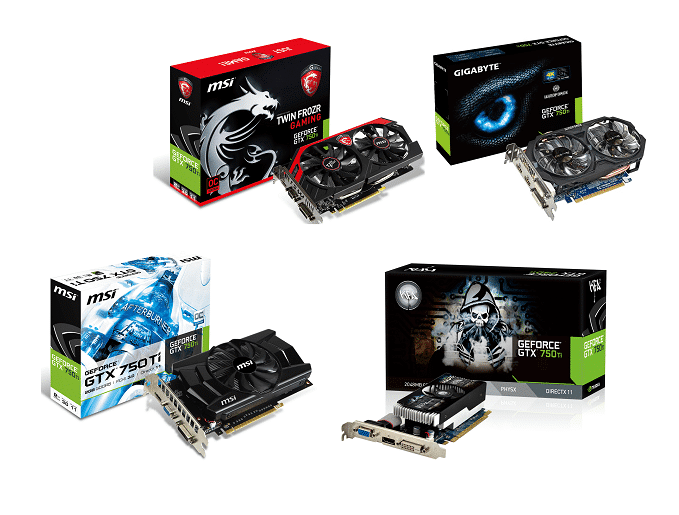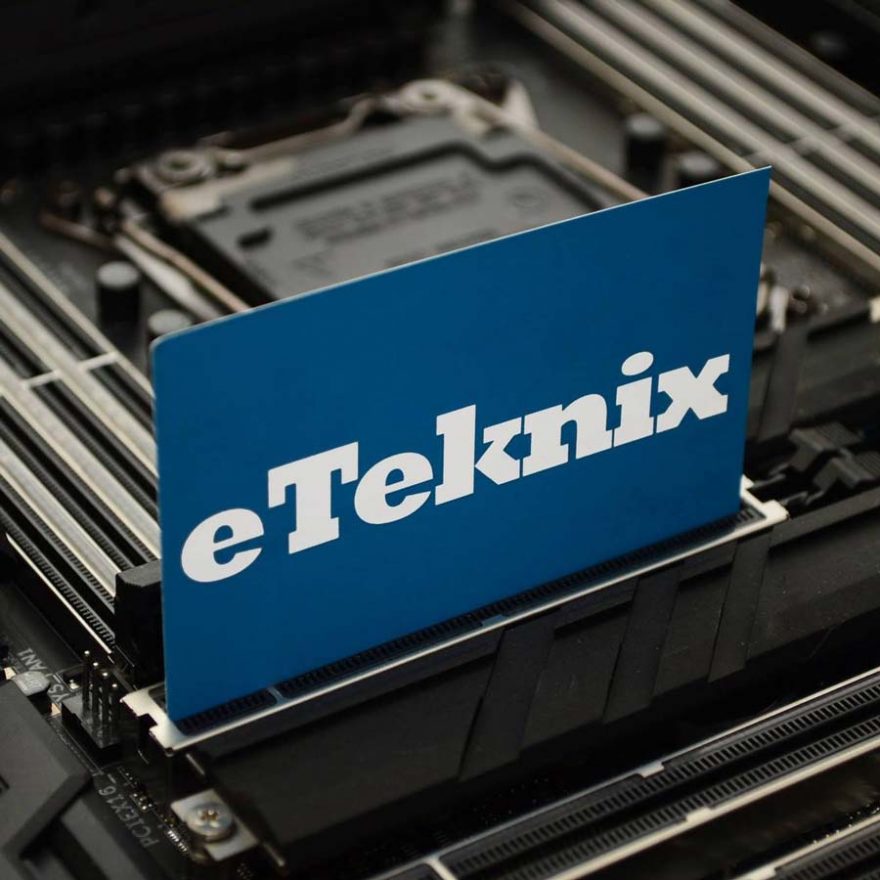Nvidia GTX 750 Ti 2GB “Maxwell” Graphics Card Review
Ryan Martin / 10 years ago
Final Thoughts
Pricing
Nvidia’s GTX 750 Ti (2GB) costs $149 while in the UK it will cost £114.99 including VAT. The Nvidia GTX 750 (1GB) will cost $119 which is £90 in the UK. Of course at this price point we have to consider AMD’s R7 260X costs $119.99 and there R7 265 costs $139.99. However, we haven’t been able to test the R7 265 OR the GTX 750 so it is difficult to compare the offerings. Currently the GTX 750 Ti and R7 265 can be had for the same price of $159.99-169.99.
At launch Nvidia have informed us there will be a tonne of GTX 750 Ti graphics cards available from its partners. Below you can see some of the options from MSI, Gigabyte and KFA2 (Galaxy).

Overview
Let me just put my thoughts right out there – Nvidia’s GTX 750 Ti has blown me away. I think what we need to first consider here is that the GTX 750 Ti is the Nvidia card most people will buy in terms of the price point it captures. As Nvidia rightly point out it is a worthy successor to the GTX 550 Ti and is 100% designed to be a sweet-spot graphics card with its attractive pricing. It is just a brilliant creation for a number of reasons: it is incredibly power efficient, it has amazing performance for its thermal envelope, it produces virtually no heat, it is incredibly compact and it has all the great features of Nvidia’s GTX 700 series cards including a built in H.264 encoder, Nvidia ShadowPlay support, Nvidia GameStream support, Nvidia G-Sync support and Nvidia Surround support. All that comes to the table at $149 and at a time when AMD graphics cards are heavily inflated in price, that $149 has never looked more attractive for gamers.
In terms of power consumption this graphics card consumes amounts close to the HD 7750 and the GTX 650 according to our testing. Yet it has performance that is twice as fast as those two. We also saw 3X the performance of the GT 640 with only a marginal amount more power consumption. The GTX 750 Ti is so efficient than you can play Battlefield 4 at 1440p with medium settings and our entire system (including the CPU) was consuming around 200W! That is just a bonkers amount of performance for the power. It also makes you think that even if AMD’s R7 265 can be had for the same price…so what? You get a card that performs maybe 5-10% better overall and consumes 100W more (based on the HD 7850 results). In the space of 3 years (which is how long most people keep their graphics cards for before upgrading) you will probably save a good $30-50 on electricity by choosing the GTX 750 Ti. However, you’re unlikely to even find the R7 265 at the same price so realistically the GTX 750 Ti will be competing with the R7 260X on price, and it doesn’t take a genius to see that Nvidia just batters the R7 260X and then some. Don’t get me wrong, I love AMD graphics cards as much as Nvidia’s offerings when both cards can be found for MSRP, but let’s reveal the cold hard truth here – mining is ruining AMD’s competitiveness for gamers. Nvidia now wins at pretty much every price point from the GTX 780 Ti/ R9 290X down to the GTX 750 Ti / R7 265, I think only in the R7 250X-R7 240 range does AMD have a clear lead. AMD’s graphics cards have now started to return close to reference pricing making the decision between the GTX 750 Ti and the AMD R7 265 a much tougher decision than when this article was first written.
Pros
- Revolutionary performance per watt
- Super low power
- Produces virtually no heat
- Runs cool and quiet even with the puny stock cooler
- Competitive pricing
- Full support for all Nvidia’s advanced features
- Compact and slim design
Cons
- More display outputs would be nice
- No SLI support
“I have absolutely no hesitation in saying that Nvidia’s GTX 750 Ti is a best-in-class product. At its given price point it does everything its rivals can do but with lower power, less heat and a much more compact design. The GTX 750 Ti really is ‘the way it’s meant to be played’ if you are on a budget or just need something that produces minimal heat, noise and uses minimal power. If this first showing is anything to go by, Nvidia’s Maxwell architecture is going to produce a brilliant range of graphics card. Bring on 2014!“
Thank you to Nvidia for providing this review sample.




















